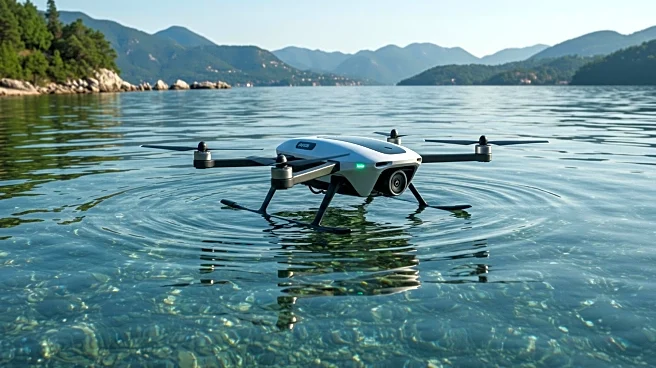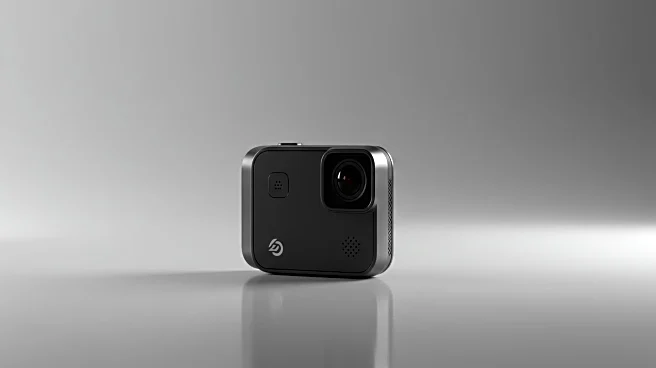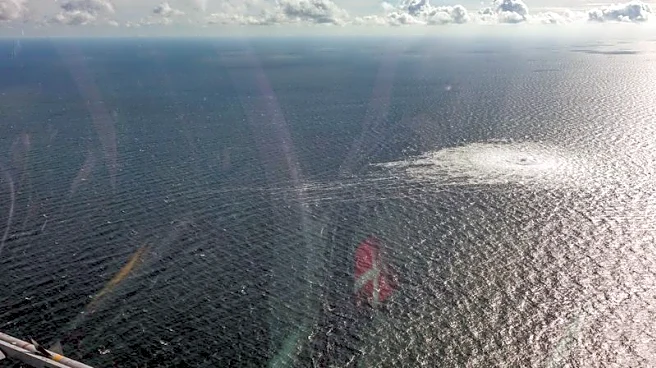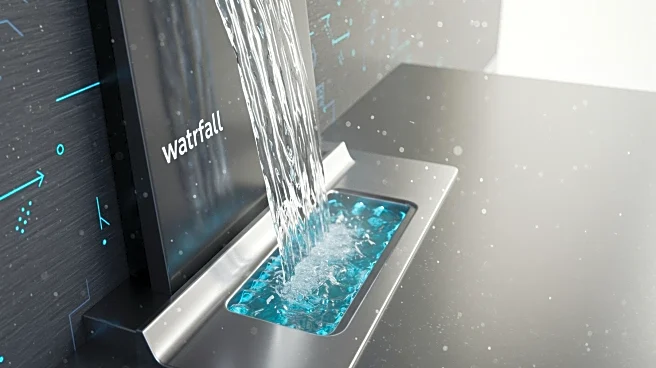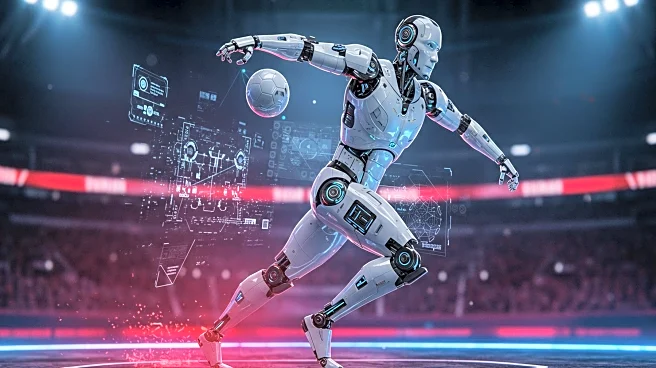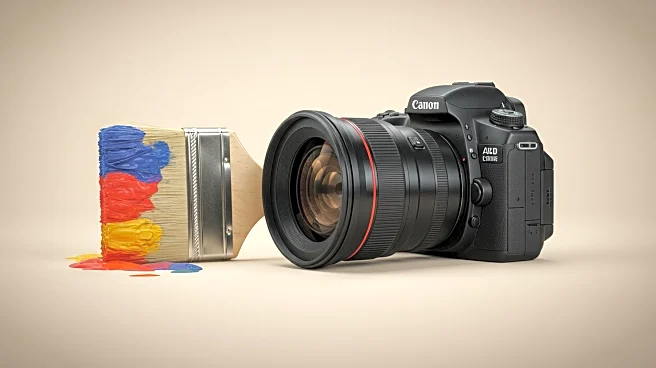What's Happening?
Zero Zero Robotics has announced the HoverAir Aqua, a new drone designed specifically for use on water. Priced at $1,000, the HoverAir Aqua is currently being crowdfunded on Indiegogo. Unlike traditional drones, this model is capable of taking off from water and is equipped with a buoy-like ring to keep it afloat. It features an IP67 rating, ensuring protection against short-term water immersion. The drone is designed to be 'hands-free,' allowing users to set it to follow them while engaging in water sports. It can reach speeds of up to 34 miles per hour and includes a 1.6-inch AMOLED display for live footage preview. The drone's camera can shoot in 4K resolution at 100 fps, and it includes 16 automated flight patterns. Weighing 249 grams, it does not require FAA registration. However, its battery life is limited to 23 minutes, necessitating careful management during use.
Why It's Important?
The introduction of the HoverAir Aqua represents a significant innovation in the drone market, particularly for water sports enthusiasts. By enabling aerial footage capture directly from water, it opens new possibilities for content creation in aquatic environments. This could benefit industries such as tourism, sports, and media by providing unique perspectives and enhancing visual storytelling. The drone's design also highlights advancements in waterproof technology and drone autonomy, potentially influencing future developments in the sector. However, the limited battery life poses a challenge, requiring users to plan their activities carefully to avoid losing the drone in water.
What's Next?
As the HoverAir Aqua is set to be showcased at the IFA tech conference in Berlin, it will likely attract attention from both consumers and industry professionals. The success of its crowdfunding campaign could determine its market availability and influence future product iterations. Additionally, the drone's performance in real-world conditions will be closely monitored, particularly its ability to withstand water exposure and maintain functionality. Feedback from early adopters may lead to further refinements and improvements in subsequent models.
